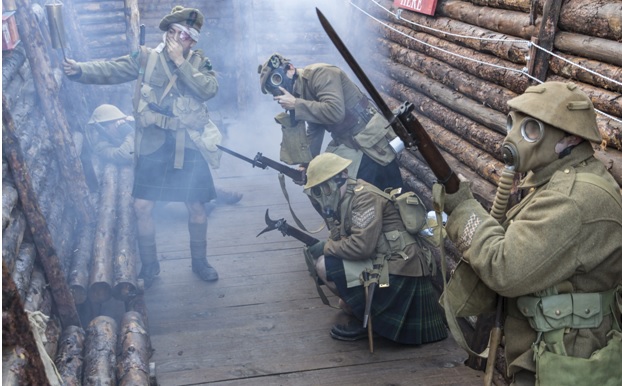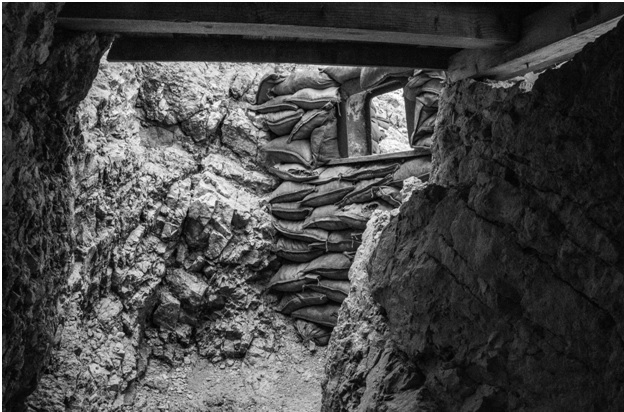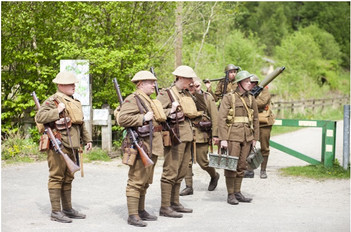Interesting Facts About Lee-Enfield Rifles
Jun 15th 2023
Lee-Enfield rifles, produced in a wide range of variants between 1895 and the present day, were widely issued to British Commonwealth forces in both World Wars and in other conflicts around the world.
One of the most intensively produced and refined platforms in history, Lee-Enfield rifles can be called without exaggeration among the most influential and impactful rifle designs ever made - much like the Mauser and M1903.
But did you know these facts about them?
- Over 45 countries around the world have adopted the Enfield rifle into official service.
- The Enfield rifle uses helical locking lugs that distributes the closing cam action over a greater surface area of the bolt and receiver, resulting in an infamously smooth action.
- The short throw of the Lee-Enfield’s bolt enabled well-trained soldiers to sustain surprisingly high rates of fire for a repeating arm. Apparently, at the Battle of Mons in the First World War, Germans who believed they were being fired up by machine gun crews were in reality only facing British infantry equipped with Lee-Enfield rifles.
- The same thing happened during the First Battle of Ypres, which some have dubbed, “The Massacre of the Innocents.” A German general present during the battle believed the English were armed primarily with machine guns, when in fact, his units were sustaining fire chiefly from soldiers armed with Lee-Enfield rifles.
- Soldiers trained and familiar with the Enfield platform were capable of firing between 20 and 30 aimed shots per minute, with an effective range of over 500 yards, and a maximum range of 3,000 yards. This made it, arguably, the fastest-firing bolt-action rifle of the First World War.

- Despite its speed, the Lee-Enfield was highly susceptible to being hobbled by dirt and grime that worked their way into the action. For this reason, many Lee-Enfield rifles were equipped with space in the stock in which field cleaning/maintenance equipment could be stored.
- In an effort to protect the bore from the ravages of the terrible conditions in the trenches of the First World War, some soldiers plugged the muzzles of their rifles with corks or covered them with a sock.
- Early variants of Lee-Enfield rifles suffered from high levels of barrel wear, which adversely impacted accuracy.
- While the Enfield rifle is infamous for its pairing with the 303 British cartridge, some were converted into .22 caliber rifles for training purposes.
- It is estimated that over 17 million Lee-Enfield rifles have been produced.
- Don’t be surprised if you hear the word “smelly” in jargon discussing the Lee-Enfield. The person speaking is referring to the “Short Magazine Lee-Enfield,” not to its olfactory attributes. The MLE, or “Magazine, Lee-Enfield” is occasionally referred to as the “Emily,” for obvious reasons.
- Critics have claimed that the SMLE’s bolt is not as strong as the Mauser’s. While this may be categorically true, the SMLE’s bolt is more than adequate to withstand the pressures generated by the .303 British cartridge it fires.
- When the SMLE was first introduced in England, it received a dual reception. Laypeople and civilians firing the weapon claimed it was inaccurate and produced too much recoil. Conversely, soldiers received the weapon well.
- Before the Second World War, one of the advancements made to this platform was that the rifle was redesigned with a heavier barrel. This made the platform more stable, improving accuracy.
- You might associate the Springfield M1903 with the American Expeditionary Force and its exploits during the First World War. While the M1903 was technically standard issue, American production capabilities were unable to keep up with the demands of the war. As a result, most American troops on the Western Front were armed with 1917 Enfield rifles.
- The SMLE was produced in a wide range of variants, including a sniper variant, the SMLE No. 4(T), which had serviceable accuracy beyond 600 yards.
- In fact, the Enfield rifle served as the basis for the L42A1 Sniper Rifle which was in service until nearly the new millennium.
- The Lee-Enfield also served with distinction in Korea, even though British involvement in the Korean War was limited. In one conflict, The Battle of the Imjin River, British Army troops armed with Enfield bolt-action rifles left upwards of 10,000 enemy casualties in their wake while defending Hill 235.
- Some soldiers in Africa and Asia still carry Enfield rifles. Apparently, the rifle remains popular, when compared to alternatives like the AK-47, for its superior accuracy and range.
- Late in the Second World War, the Number 5 Mk.1 Enfield was developed, and has come to be known as the “Jungle Carbine.” It was lighter and shorter, with a receiver design that removed excess metal, but as a result, it produced sharper recoil, making it unpopular with soldiers. It was also said to be plagued by a “wandering zero,” that adversely impacted accuracy.
- Some Lee-Enfield rifles, particularly in Australia, were converted to smoothbores capable of chambering and firing .410 shotshells.
- The Enfield has been converted into at least two fully-automatic versions. However, at least one of these, the Howell Automatic Rifle, was not practical due to complications in handling arising from the force of recoil.

- Lee-Enfield rifles, which are still in serve in some areas of the world, are among the oldest bolt-action rifles in service.
- In the wake of the Second World War, many surplus Lee-Enfields for sale were available in Commonwealth Countries as well as in the United States. They are popular hunting rifles in many countries and many have been sporterized to make them more suitable for hunting and target shooting. Some shooters also prefer the .303 British cartridge to the .30-06, another popular hunting cartridge with a long service history, because the British alternative produces less recoil and is still capable of dispatching most if not all North American game.
Looking for a Lee-Enfield for Sale?
Are you looking for a Lee-Enfield for sale, or for parts for an Enfield rifle? Check out our collection via the previous link or get in touch with us at 610-250-3960 and let us know what you’re looking for.

